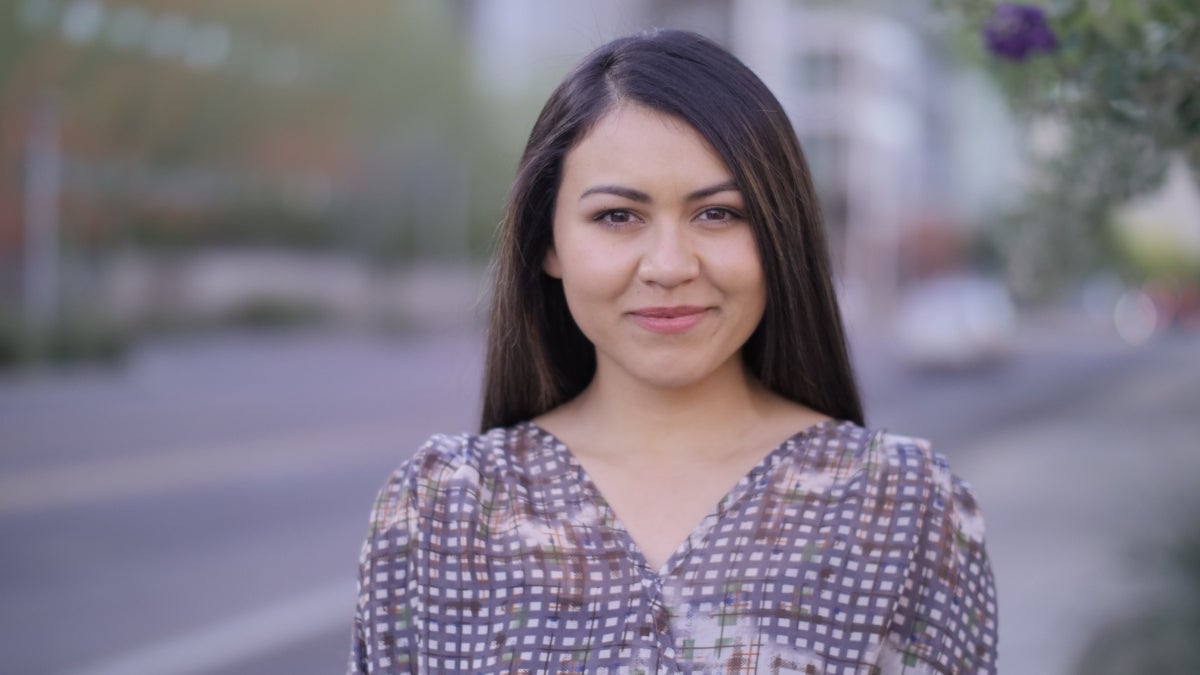Translating interventions: Psychology student works to improve treatment for diverse populations

Ahtziry Vasquez always knew she wanted to help people through psychology and now has the chance to help those who need it the most. Photo by Robert Ewing
Ahtziry Vasquez is a first-year student in Arizona State University's applied behavior analysis master’s degree program who helps children and adults with autism spectrum disorder learn how to be more successful in their home, school, and community. She always knew she wanted to help people through psychology and now has the chance to help those who need it the most.
Applied behavior analysis (ABA) is a psychological field that relies heavily on the ability to analyze verbal and visual cues from clients or family members, such as looking up or raising an eyebrow, to identify what the client’s needs are, based on how they are responding to their surroundings. The behavior analyst then makes changes to the surroundings to help that individual learn to be more successful in their environment, while helping them reduce maladaptive behaviors such as withdrawal, outbursts or aggression.
ABA is widely used in treating behavioral or learning challenges in students in special education that are suffering from autism spectrum disorder or attention deficit hyperactivity disorder. However, the practice is also used widely in health and exercise science and in organizational psychology.
The goal of an applied behavior analytic approach is to maximize behaviors of social significance to help the client improve their lives. This goal becomes more difficult when the ability to communicate what behavior is happening is compromised through a language barrier.
Over 38% of the population of Phoenix speak a non-English language, and some have learned English as a second language; they often require the use of a translator in addition to the behavior analyst.
“One of the biggest difficulties in having a translator in an interview is that they may interpret what the client is saying differently than the analyst would and we can miss important cues,” said Vasquez. “It gets in the way of their treatment.”
Vasquez is fluent in Spanish and decided to take matters into her own hands. This fall, she became a licensed interpreter after passing the interpreter certification from ALTA, an internationally recognized translation and interpretation training company.
“There needs to be consistency across providers, clinicians and the parents in the home and in the schools,” Vasquez said. “If we can’t communicate those skills to the parents, how are they going to implement them consistently at home?”
This training wasn’t required as part of her program, but Vasquez chose to do it in order to help more people.
“This desire to improve and help more people is a hallmark of all our students in the program and it is a big reason why we have had a 100% placement rate for our graduates the last three years,” said Don Stenhoff, a clinical assistant professor and co-director of the MS ABA program. “We have some special students and we are excited to see all that they accomplish.”
More Science and technology

ASU professor wins NIH Director’s New Innovator Award for research linking gene function to brain structure
Life experiences alter us in many ways, including how we act and our mental and physical health. What we go through can even…

ASU postdoctoral researcher leads initiative to support graduate student mental health
Olivia Davis had firsthand experience with anxiety and OCD before she entered grad school. Then, during the pandemic and as a…

ASU graduate student researching interplay between family dynamics, ADHD
The symptoms of attention deficit hyperactivity disorder (ADHD) — which include daydreaming, making careless mistakes or taking…